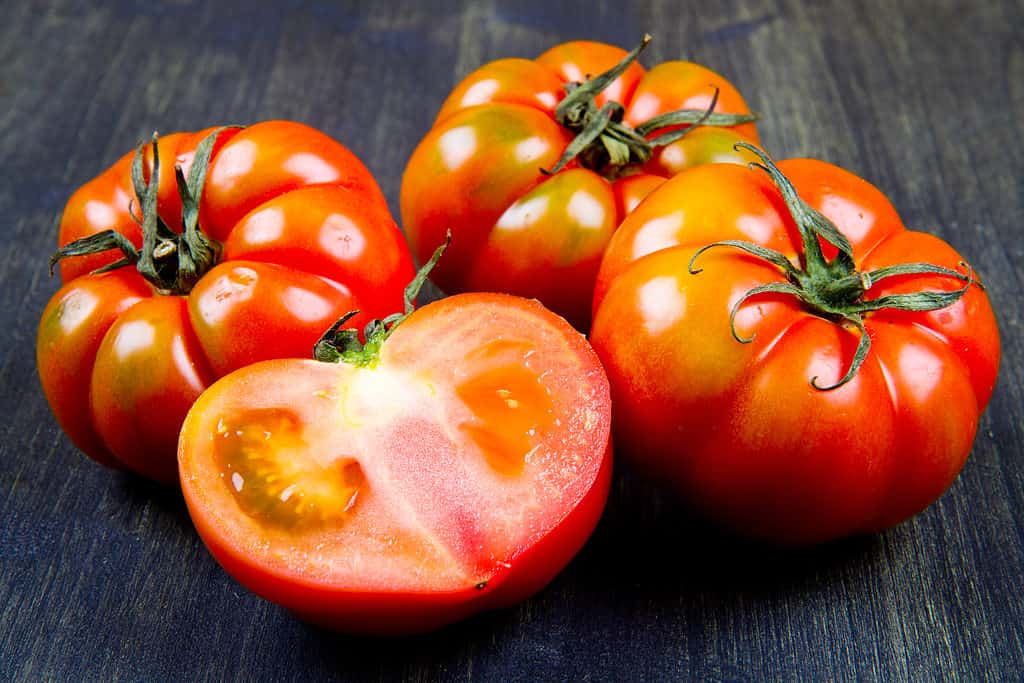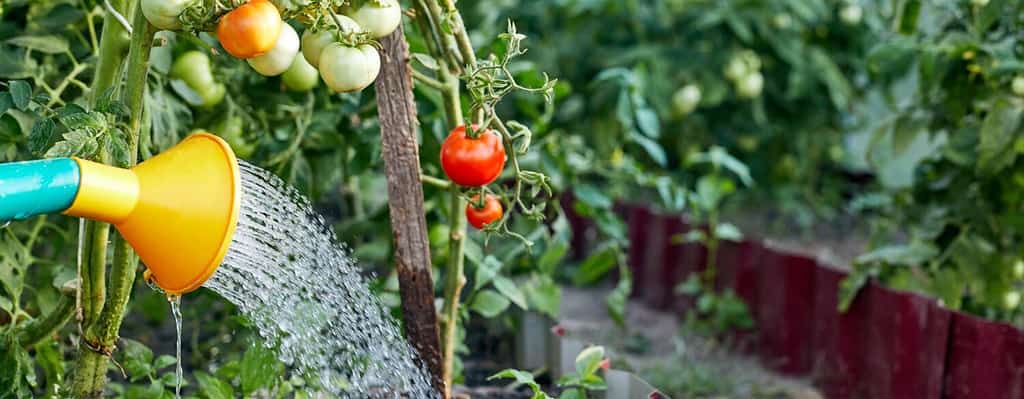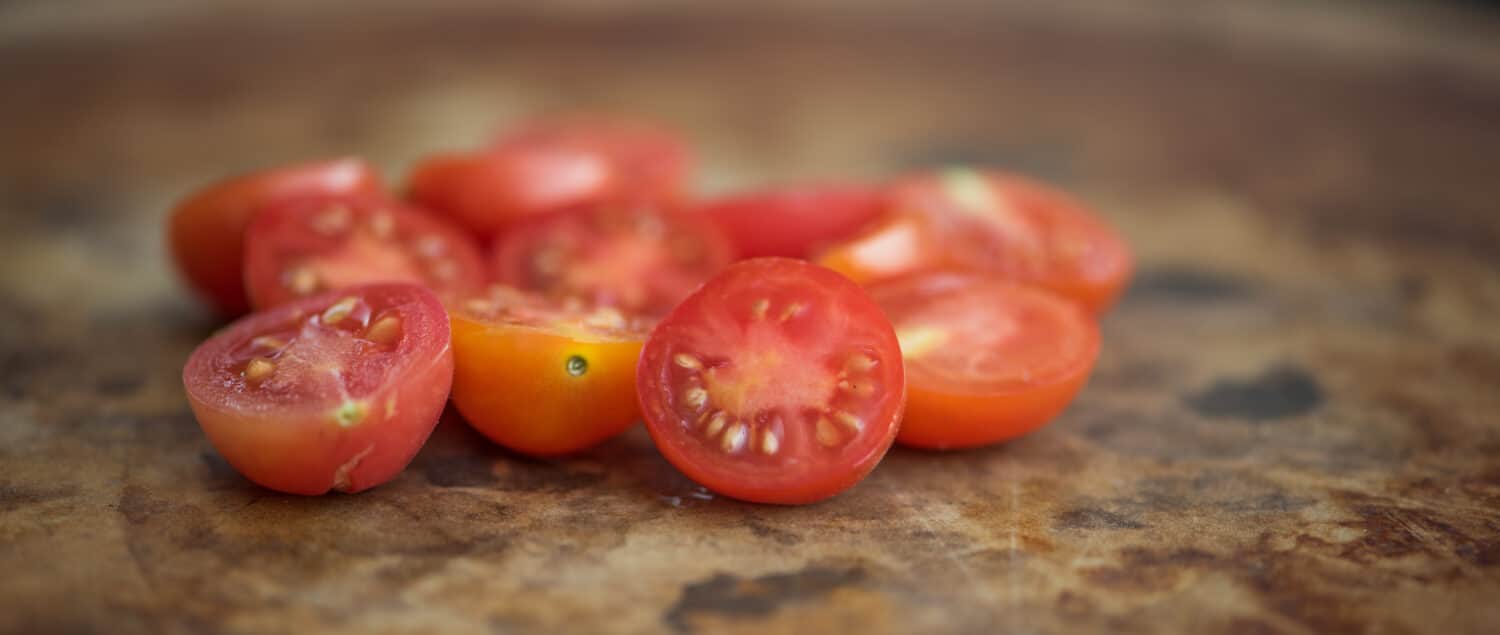Colorado is a very hot and dry state, but this doesn’t mean you can grow your food. Tomatoes thrive in warm and sunny environments. To grow delicious and refreshing tomatoes, you’ll need to provide your plant with the right soil, water, plant food, and more. Follow along to learn how to grow tomatoes in Colorado, including 8 bonus tips!
Can You Grow Tomatoes in Colorado?
Growing tomatoes in Colorado is a lot easier than it looks. This delicious fruit doesn’t need a lot of space either. You can grow it indoors, outdoors, or in covered patios and balconies.

Colorado offers great opportunities to grow tomatoes.
The Best Time to Grow Tomatoes in Colorado
While you can grow tomatoes in Colorado, you must choose the best time to plant them or transplant them outside. Tomatoes need a lot of warmth and sun, but too much can cause the fruit to crack and the leaves to wilt. It’s best to plant tomato seeds indoors and then transplant seedlings outside. You can also directly plant them outside, but wait until after the last threat of frost. Ideally, for a fall harvest, plant tomato seeds during the end of April or May. Tomato seeds need consistent temperatures above 50ºF to germinate.

One of the best times to plant tomatoes in Colorado is April.
©Luca Santilli/Shutterstock.com
8 Helpful Tomato Growing Tips
Tomatoes are delicious, and hydrating, and produce beautiful flowers that can spice up your garden. They are unique plants with over 2,000 cultivated types. You can grow large juicy beefsteak tomatoes, or small cherry tomatoes to snack on! Colorado gardeners aren’t limited to growing outside either. You can grow tomato plants indoors, provided you have plenty of light, space, and water. Some tomato plant cultivars are dwarf varieties, meaning they stop growing at a specific short height. They grow well on window seals. You can also purchase or make your own small indoor hydroponics system. The possibilities are endless!
Growing tomatoes in this state doesn’t have to be hard. Here we have 8 tomato-growing tips to make your life easier.
1. Water Before or After the Sun is Up
The first tip for an excellent tomato harvest in Colorado is to only water your plant when the sun is down, meaning early morning or late afternoon. If you water your plant when the sun is high, it can stress it out. Another thing to note about watering tomato plants is to water the soil directly. Avoid pouring water on top of the plant. This can cause yellow or brown marks on the leaves.

Tomato plants need a lot of water. It’s best to water your tomato plant before the sun comes up, or after it’s gone down.
©wertinio/Shutterstock.com
2. Enrich your Soil
While tomato plants are resilient, they thrive in nutrient-rich soil. Generally, you can use any vegetable potting soil sold in garden stores. However, if you notice your plant isn’t producing flowers or is growing slowly, it’s not a bad idea to enrich your soil with nutrients. You can add compost and mulch. Add organic matter with potassium, calcium, magnesium, and phosphorous.

Tomato plants thrive in highly nutrient soil.
©sasirin pamai/Shutterstock.com
3. Water Regularly
One of the most important parts of growing tomatoes in Colorado is to regularly water your plants. Technically, this could have been added in the previous water-related tip, but I figured it was important enough to have its moment to shine.
Colorado summers are intense! Watering once a week isn’t enough, you may need to water your tomato plants at least every other day. Don’t water the plant though before checking the soil. The soil needs water when the top 2 inches is dry. If not, you can accidentally drown your plant, causing root rot. Missing watering though can also harm your plant and cause it to wilt. When you don’t provide tomatoes with enough water, they crack and can rot.
4. Provide Plenty of Air Flow
The fourth tip is to provide airflow. This isn’t always necessary if your plant is outside as it isn’t surrounded by walls. But, if you’re growing tomatoes in Colorado in a screened-in patio, or your home, you’ll need to provide airflow/circulation. Without enough airflow, moisture increases, which can lead to mold. Too much moisture also attracts pesky gnats and aphids. To prevent these diseases and pests, you can install a small fan near the plant to provide airflow.
5. Spray Neem Tree Oil
Tomatoes plants are one of the most rewarding plants to grow, but they are also frustrating and vulnerable to diseases and pests, like aphids. Aphids are small sap-sucking insects that come in different shapes and colors. Some are white, while others are bright green and hide well. Either way, they destroy plants and spread diseases. To prevent and get rid of aphids, gardening experts recommend spraying neem tree oil on the leaves and stem. Do this when the sun isn’t out or intense. Neem oil works by suffocating and trapping aphids on contact. You can also spray your plant with a mix of soap and water to prevent more aphids from returning.

There are 5,000 species of aphids.
©Holger Kirk/Shutterstock.com
6. Trim Dead Leaves and Tomatoes
Tomatoes are fruits that don’t have to ripen on the vine. The next tip we have for you is to trim any dead or infected leaves or branches. Related to this idea is also harvesting tomatoes when they are ready. Don’t leave tomatoes to rot on the plant. This can attract bugs and small animals. If you harvest tomatoes green, you can leave them on the counter and they’ll slowly turn red or purple, depending on the variety. Some people also recommend placing unripened tomatoes in a brown paper bag.
It’s important to use sterile scissors or knives to prune tomato plants. If you use a dirty gardening tool, you can accidentally spread disease with each cut. So, why should you get rid of dead leaves? While it’s true that eventually dead leaves and fruit fall off, not pruning them sooner can confuse your plant. Instead of focusing their energy on producing new leaves or flowers, the plant will try and revive or keep growing the fruit or branch.
7. Cut, Don’t Pull
While this tip might sound silly, it’s very important. It’s tempting to want to pull a round and ripe tomato off the vine, but this can accidentally hurt your plant and the other fruits around. Tomato fruits are heavy. When pulling, you need a lot of force, which can accidentally snap off branches and young, small fruit. Instead of pulling or plucking tomatoes, harvest them using pruning scissors. In other words, cut, don’t pull. This also goes for dead leaves. You wouldn’t want to pull on a tomato and completely pull up your plant, roots, and all.

While harvesting, prune and harvest tomato plants using proper cutting tools.
©New Africa/Shutterstock.com
8. Re-pot/Transplant as your Plant Grows
The last tip that can help you when growing tomatoes in Colorado is to re-pot or transplant your tomato as needed. This only applies when you grow tomatoes in containers. There are many container-friendly varieties. Even seed packets that don’t emphasize containers can still be grown in pots, as long as the container is large enough.
Nothing remains the same though, including size. So, as your tomato plant grows, you’ll need to keep transplanting your tomato plant to new containers. Make sure the containers are the right size, are clean, and have drainage holes. If you don’t transplant your potted tomato, this can cause root problems. When there isn’t enough space, roots start to wrap around themselves, and sometimes even crack containers.
Thank you for reading! Have some feedback for us? Contact the AZ Animals editorial team.








